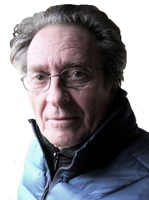
|
The Society of Folk Dance Historians (SFDH) Opas
Home |
About |
Encyclopedia | CLICK AN IMAGE TO ENLARGE |
BACKGROUND
Historically, this dance form may have come with major migrations from Thrace to Dobrudža, especially in the 18th century.
Translation: Belt
Pronunciation: OH-pahs
Source: Yves Moreau, Marty Koenig, and Jaap Leegwater all have taught dances from this family. I learned one from the Gabrovo Ensemble in 1993. Marty learned this dance in the village of Srebarna, in the Dobrudja region. The Madison folkdance community learned it from Marty Koenig in the early 1970s and has been doing it continuously ever since. This description is based on a syllabus from Marty and on Madison tradition.
Location: The Opas is a genre of men's dance found in the Dobrudža (Danube delta) region of Bulgaria and may be considered their version of the Pravo.
Region: Bulgaria
Meter: 2/4
Music: BAEU-1 "Bulgarian Folk Songs and Dances."
Formation: Line; dancers in belt hold with left arm over, right under. The name describes the hold used: "za opas" (by the belt) in the local dialect. In standard Bulgarian this expression is "za pojas."
Style: The body style, which is based strongly on the earth and done very much into the ground, depends on the flexed-knee posture characteristic of Dobrudžan men's dances. Beginning with gentle rocking ("zaspi" = "go to sleep") in Fig I, the dance develops increasing force and energy, complementing forceful footwork with head and shoulder movements.
Steps: Čukče: "hammer" (raise and lower heel).
Note: Execute the figures in the order presented here. The leader (right-most dancer) calls for the next step at his discretion. For Fig V and VI the leader can just call "Novo" (new). These two figures are optional: to omit them, just call "Pravo" (straight or direct) after doing some of Fig IV. Beginning with gentle rocking ("zaspi" = "go to sleep") in the first figure, the dance develops increasing force and energy, complementing forceful footwork with head and shoulder movements.
Presented by: Michael Kuharski, Door County Folk Festival – 1996.
| MEAS | ACTION | |
| The Dance |
| I. | Pravo or Bavno (straight/direct or slowly) |
| 1 | Facing center, step R sideward R (ct 1); Step L beside R (ct 2). |
| 2 | Step R sideward R (ct 1); "Čukče" (hammer) on R, bringing L foot across in front of R (ct 2). |
| 3 | Step L across in front of R (ct 1); "Čukče" on L, lifting R (ct 2). |
| II. | Čukni (snap) |
| 1 | In place, fall heavily onto R (ct 1); In place, fall heavily onto L (ct 2). |
| 2 | In place, fall heavily onto R (ct 1); In place, fall heavily onto L (ct &); In place, fall heavily onto R (ct 2). |
| 3 | In place, fall heavily onto L, turning body 1/4 turn left (ct 1); Stamp R in place beside L (ct 2). |
| III. | Napred (forward) |
| 1-6 | Execute Fig II twice, moving forward toward center. |
| 7 | Stamp R in place (ct 1); Stamp R in place (ct 2). (Yes, you just did 3 stamps in a row.) |
| IV. | No call: a continuation of Napred |
| 1 | Moving in LOD, knees bent and feet low to the ground, fall onto R (ct 1); Hop R, crossing L in front of R (ct 2). |
| 2 | Continuing in LOD, fall onto L (ct 1); Hop L, bringing R leg around in front (ct 2). |
| 3 | Pull R leg back, falling onto both feet with knees bent (ct 1); Hold (ct 2). |
| V. |
| 1 | Moving in LOD, knees bent and feet low to the ground, fall onto R (ct 1); Hop R, crossing L in front of R (ct 2). |
| 2 | Continuing in LOD, fall onto L (ct 1); Hop L, bringing R leg around in front (ct 2). |
| 3 | Hop L in place, beginning back bicycle lift with R (ct 1); Step R in place (ct &); Step L in place beside R, feet together, knees bent (ct 2). |
| VI. | "Power Pravo" |
| 1 | Facing center, shift weight to R, leaving L foot in place (ct 1); Shift weight to L, leaving R foot in place (ct 2). |
| 2 | Heavy step onto R sideward R (ct 1); "Čukče" on R, bringing L foot across in front of R (ct 2). |
| 3 | Step L across in front of R (ct 1); "Čukče" on L, lifting R (ct 2). |
DOCUMENTS
- Bulgaria, a country.
- Martin Koenig, an article.
This page © 2018 by Ron Houston.
Please do not copy any part of this page without including this copyright notice.
Please do not copy small portions out of context.
Please do not copy large portions without permission from Ron Houston.
